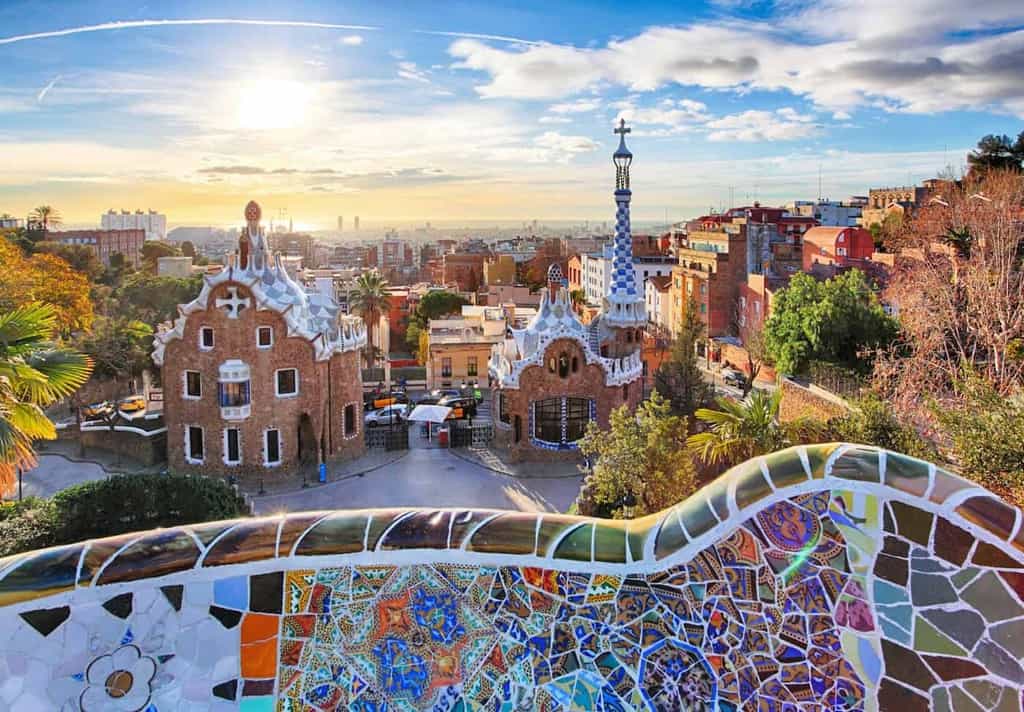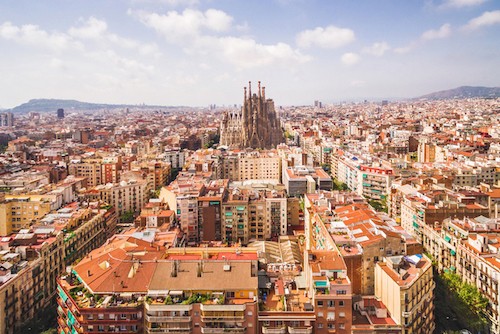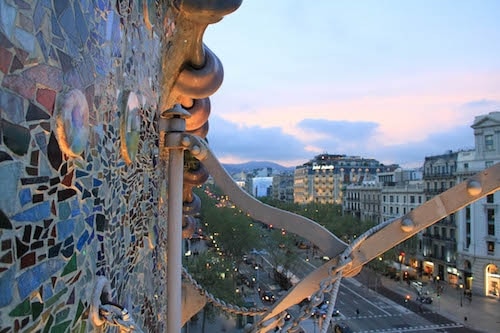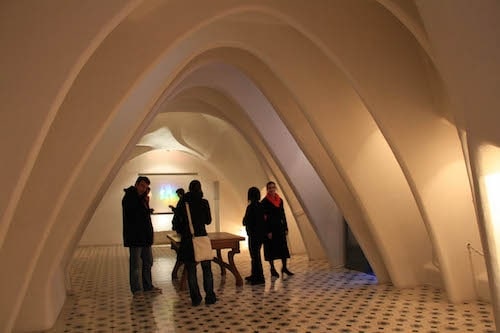Because I really believe, after a long time of working and thinking and studying, that architecture…can only express this civilization we are in and nothing else. – Mies van der Rohe
I grew up in Chicago in the shadows of Frank Lloyd Wright, Mies van der Rohe, Louis Sullivan and Daniel Burnham to name a few. My fascination with form and function began in my elementary school years when I chose to study the Monadnock Building for a class project. Partially completed in 1891 and designed by Burnham & Root, the building represented the times; a post-fire shift to brick, steel and the skies. It was a transitional structure in American architecture at 16-stories with its six-foot thick walls and cantilevered steel, and it was my first architectural love.
I spent the next many years studying the great Chicago architects and buildings. I marveled at the ingenuity, the passion and the way architecture rooted me in a sense of timelessness; being both in the moment and in days past. It was intoxicating.
Decades later, I found myself in Barcelona. A far cry from the mid-century, modern steel lines of Mies van der Rohe and the generations of architects he inspired. Rather, I stood in the voluminous temple of Antoni Gaudí’s La Sagrada Familia. I was confused, overwhelmed and in utter awe of the visceral and ethereal nature of the design. It was unlike anything I had ever experienced – and I use that word intentionally – it is an experience, and it was only the beginning of my Gaudí explorations in this deeply cultural, passionate and artistic city.
Barcelona
The capital of the Spanish province of Catalonia, Barcelona, is the second most populated city in Spain and no stranger to creativity and independence. It is the birthplace of artistic giants including Miró, Dalí and Picasso. It fiercely adheres to its own Catalan history, culture and language. It is the perfect place to shed expectations and preconceived notions, and to surrender to the city’s unique, whimsical magic.
Barcelona’s Barri Gòtic is comprised of narrow, winding lanes opening surprisingly into café filled squares dotted with palm trees. The equally enchanting and adjacent quarter known as El Born, is filled with Bohemian shops, art museums and trendy eateries. The Eixample, by contrast, is the new town, outside of the former city walls and laid out on a grid. But don’t let this sense of function fool you, the Eixample is full of color, playfulness and of course, Gaudí.
Gaudí
Antoni Gaudí was a fascinating character. Born in 1852, he left home at the age of 16 for the Barcelona School of Architecture. Upon graduation, school director Elies Rogent, is reported to have said, “Gentlemen, we are here today either in the presence of a genius or a madman!”
More than a century later, it is clear Gaudí was indeed a genius of an architect with a style that is at once both bizarre and distinctive. He combined his love of Catalan culture with revival Gothic and oriental elements throughout his works. But it was his fascination with nature that is most the interesting architectural component. From mushrooms to the skeletal ribs of whales, leaves and fish, Gaudí’s works are Dr. Seuss-like in their whimsy and uniquely enveloping. Walking through the halls and cavernous spaces of his buildings, it’s easy to feel a part of elements and lost from perceived realities. Indeed, you can even fit your own hand into the very fingers of the masons that handcrafted the walls decades ago.
He also had an advanced grasp of form, creating dynamic and organic shapes and structures, many ergonomic before their time. He designed more than a dozen buildings, most of which can be found in Barcelona.
Gaudí was appointed architect of the Sagrada Familia Temple in 1883 (a year after the first stones were laid). In taking over the project, he proposed moving away from the Gothic plan to a more modern and inspirational design. In 1915, he ceased work on all other projects, devoting all his time to the Sagrada Familia. He spent 43 years, designing, concepting and creating the masterpiece before he was tragically hit by a passing tram on his way to work. Dressed meagerly, he was not immediately recognized and died unceremoniously in a hospital days later. His work remains under construction today, 136 years after it began and is remarkably only 70% complete.
Where to See Gaudí’s Architecture in Barcelona
The architecture of Gaudí, like wine, is best understood by learning the story behind the art, the culture that formed its roots and the individual elements poured into the whole. It’s meant to be savored, experienced and to transcend. And while as Winetravelers Barcelona has much to be explored, this itinerary is designed for those seeking inspiration, architectural wonder and perhaps even a sense of terroir?
We decided to make our tour of Gaudi’s architectural wonders a bit more interesting from the average experience. Before or after immersing yourself in his creations, consider trying one of our recommended wines related to what you’ll be witnessing.
You can access each of our recommended sites by hopping in a cab or Uber, but perhaps the best way to experience Gaudi is by E-Bike. You can schedule a privately guided E-Bike Tour that focuses on Gaudi’s works, or if you feel like walking, book a private tour ahead of time with our local friend Julia.
Architecture should speak of its time and place, but yearn for timelessness. – Frank Gehry
Casa Milá (La Pedrera)
A residential property built for a wealthy Barcelona businessman. It was constructed between 1906 and 1912. The tour includes access to the rooftop and into individual residences within the building. (This is also where you can view the mason’s hand prints in the stone – amazing!) We recommend the Secret Pedrera tour at night – book in advance.
Recommended wine pairing: Cava! The Spanish sparkling wine made in the traditional methods. It’s the perfect accompaniment to the dazzling views from atop the roof of La Pedrera.
Park Güell
This is by far one of the most incredible places in the world. The Park is an urban garden full of hidden places, wonder and whimsy. Once a private residential development, built in 1914, the views from the “undulating bench” overlooking Barcelona are priceless.
Recommended wine pairing: Xarel-Lo. One of the primary grapes for Cava, in still form the Xarel-Lo offers body, acid and citrus characteristics perfect for lounging outside on a hot Barcelona summer day.
Casa Battló
My personal favorite of the Gaudí works. Built between 1904 and 1907, Gaudí transitioned a home for the industrialist, Josep Battló Casanovas. It’s astonishingly modern for the time and transforms shapes and materials into an ethereal masterpiece. We recommend visiting in the evening an hour or two before closing time for fewer crowds. Check out their music offerings during the summer season.
Recommended wine pairing: Ull de Llebre. This is the local name for Tempranillo, a Spanish wine offering acidity, notes of deep fruit and leather. Its local name means “eye of the hare,” perfect for the “House of Bones.”
Palau Güell
This is one of Gaudí’s earlier works, constructed between 1886-1888, and it is a stark contrast to the works mentioned above. The Palau is located in the historic center of Barcelona and blends both harsh, dark Gothic elements with a festival of color. It’s said to have been designed to metaphorically represent its patron, Eusebi Güell i Bacigalupi, rising from dark to light.
Recommended wine pairing: Cariñena. More widely recognized by its other name, Carignan, this wine is bold, savory and even gamey, but offers smooth tannins. It’s a complex mixture of characteristics, much like the Palau and its original owner.
La Sagrada Familia
Referenced above, this is the quintessential masterpiece…and it’s still not complete. It is impossible to put into words the beauty, curiosity and contrast of the vastly diverse architectural and design elements as well as the materials and artistry used to create this signature wonder. Reservations are a must and plan to lose yourself for hours. I also recommend visiting the underground museum. It features drawings, original pieces, old photos and the model workshop where artisans continue to follow Gaudí’s methods.
Recommended wine pairing: Cabernet Sauvignon, the king of all reds, because this is the crowning work of a genius architect.
Art & Architectural Museums in Barcelona to Visit
If you’re fortunate to have more than three days in the vibrant city of Barcelona, here are a few more sources for artistic and wine explorations:
For art aficionados:
- The Picasso Museum
- Catalan Art Museum
- The Gaudí Exhibition Center
- Fundacío Joan Miró
- The Museum of Modernism
Barcelona wine bars to visit before or after experiencing Gaudi’s works:
- Monvínic
- La Xampanyeria Bar
- Bar Brutal
- Cellarer
- Zona d’Ombra
- La Paradeta Restaurants (for some fresh, amazing seafood!)
Winetraveler Tip: Make sure to eat a mid-day meal with the locals at Con Cargol in the Eixample for family-style Catalan delicacies.
You are reading “Must-See Gaudi Architecture in Barcelona” Back To Top
where is Gaudi architecture in Barcelona, best Gaudi houses to visit: trending travel destinations in Spain
If you enjoyed this guide, make sure you register to become a Winetraveler for free! You’ll get access to all of our content and interact with other Winetravelers and for travel inspiration around the world. Be sure to follow along with us on Instagram as we continue to feature more exciting destinations.




